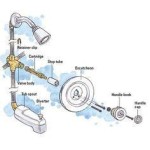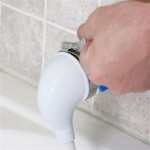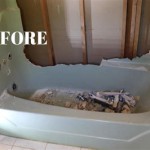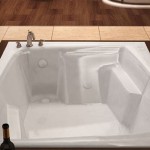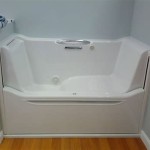What Size Are Bathtub Drains?
Determining the correct size for a bathtub drain is crucial for ensuring efficient water drainage and preventing potential plumbing issues. While bathtub drains might appear uniform, specific dimensions and connection types exist, influencing their overall performance and compatibility with various bathtub models. This article will comprehensively explore the standard sizes of bathtub drains, the factors influencing these dimensions, and considerations for selecting the appropriate drain size for different bathtub setups.
Bathtub drains are more than simple holes allowing water to escape. They are engineered components that connect the bathtub to the wider plumbing system. A properly sized drain facilitates rapid water removal, prevents clogs, and minimizes the risk of overflows. An undersized drain, conversely, can lead to slow draining, standing water, and the accumulation of debris, which can ultimately result in costly plumbing repairs. Understanding the nuances of bathtub drain sizing is, therefore, essential for plumbers, contractors, and homeowners alike.
Standard Bathtub Drain Sizes
The most common size for a bathtub drain outlet is 1 1/2 inches (3.8 cm). This measurement refers to the inner diameter of the drain pipe where it connects to the bathtub's drain flange. This standard size is widely adopted across various bathtub manufacturers and is generally considered the industry norm for residential bathtubs.
The 1 1/2-inch measurement is not arbitrary; it reflects a balance between providing sufficient drainage capacity and accommodating standard plumbing fittings. This size allows for a reasonable flow rate, preventing water from backing up during typical bathtub usage. It is also large enough to handle the occasional debris, such as hair and soap scum, without easily clogging.
While 1 1/2 inches is the most prevalent size, variations can sometimes be found, particularly in older homes or with specialized bathtub designs. In rare instances, drains might be slightly smaller or larger, but these deviations are typically exceptions rather than the rule. When replacing a bathtub drain, it is always advisable to accurately measure the existing drain to ensure proper compatibility with the new fixture.
Factors Influencing Bathtub Drain Size
Several factors can influence the selection and size of a bathtub drain. These factors pertain to the bathtub's design, the plumbing infrastructure, and specific regional plumbing codes. Understanding these influences helps ensure the appropriate drain size is selected for each application.
Firstly, the bathtub's overall size and shape play a significant role. Larger bathtubs, such as oversized soaking tubs or whirlpool tubs, might require higher flow rates to drain efficiently. While the drain outlet itself might still be 1 1/2 inches, the internal plumbing connecting to that outlet, including the overflow pipe, might be configured to handle a greater volume of water. The overflow pipe, typically located near the top of the bathtub, prevents water from overflowing if the drain becomes blocked or if the faucet is left running. The diameter and configuration of the overflow pipe are often coordinated with the drain size to ensure optimal performance.
Secondly, existing plumbing infrastructure can dictate the drain size. In some older homes, the existing drain pipes might be smaller than the standard 1 1/2 inches. In these cases, adapting to the existing plumbing might necessitate using a reducer fitting to connect the bathtub drain to the smaller pipe. Conversely, in new construction or renovation projects, it is best practice to install plumbing that adheres to current building codes and standards, typically requiring the 1 1/2-inch drain size.
Thirdly, local plumbing codes and regulations can stipulate the minimum acceptable drain size for bathtubs. These codes are designed to ensure adequate drainage capacity, prevent sewage backups, and protect public health. Before installing or replacing a bathtub drain, it is crucial to consult local plumbing codes to ensure compliance.
Furthermore, the type of bathtub drain assembly also influences size considerations. Bathtub drain assemblies come in various configurations, including pop-up drains, lift-and-turn drains, and toe-tap drains. Each type has its own specific design and mechanism for controlling the flow of water. While the drain outlet size might remain consistent at 1 1/2 inches, the internal components of the drain assembly can vary, affecting the overall flow rate and ease of installation. The material used in the drain assembly, such as brass or PVC, can also influence its durability and resistance to corrosion.
Considerations for Installation and Replacement
Proper installation and replacement of bathtub drains are critical for ensuring leak-free operation and optimal drainage performance. Several key considerations need to be taken into account during these processes.
Firstly, accurate measurement is essential. Before installing a new bathtub drain, the existing drain opening should be measured to confirm its size. Even if the bathtub is designed for a standard 1 1/2-inch drain, slight variations can occur due to manufacturing tolerances or previous repairs. Using a caliper or measuring tape to accurately measure the inside diameter of the drain opening ensures compatibility with the new drain assembly.
Secondly, proper sealing is paramount. Bathtub drains typically use rubber or silicone gaskets to create a watertight seal between the drain flange and the bathtub surface. These gaskets must be properly installed and tightened to prevent leaks. Applying plumber's putty or silicone sealant around the drain flange can further enhance the seal and prevent water from seeping through. Over-tightening the drain flange can damage the bathtub surface or the drain assembly itself, so it is important to follow the manufacturer's instructions regarding torque specifications.
Thirdly, the correct type of drain assembly should be selected based on the bathtub's design and plumbing configuration. Different types of drain assemblies, such as those mentioned earlier (pop-up, lift-and-turn, toe-tap), have varying installation requirements and performance characteristics. Choosing the appropriate type ensures compatibility and ease of operation. For example, a pop-up drain assembly typically requires a linkage mechanism that connects the drain stopper to a lever located on the bathtub's overflow plate. The length and configuration of this linkage must be properly adjusted to ensure the drain stopper seals effectively and opens fully.
Furthermore, when replacing a bathtub drain, it is important to inspect the drainpipe for any signs of corrosion or damage. If the drainpipe is corroded or damaged, it should be replaced to prevent leaks and ensure proper drainage. In some cases, replacing the drainpipe might require cutting into the wall or floor to access the plumbing connections. This type of repair should be performed by a qualified plumber to avoid damaging the surrounding structure or plumbing.
Additionally, ensuring proper alignment of the drainpipe is crucial for preventing leaks. The drainpipe should be aligned so that it slopes slightly downwards towards the main drain line. This slope ensures that water flows freely from the bathtub to the drain line, preventing standing water and promoting efficient drainage. If the drainpipe is not properly aligned, it can create a trap where water can accumulate, leading to clogs and corrosion.
Finally, after installing or replacing a bathtub drain, it is essential to test it thoroughly for leaks. This can be done by filling the bathtub with water and checking for any signs of water leakage around the drain flange, the drainpipe connections, and the overflow pipe. If any leaks are detected, the drain assembly should be tightened or re-sealed until the leaks are eliminated.
In summary, while 1 1/2 inches represents the standard size for bathtub drain outlets, understanding nuances related to tub size, existing plumbing, and local codes is crucial. Careful measurement, proper sealing, and the correct selection of drain assembly are vital for successful installation and lasting performance. Consulting with plumbing professionals guarantees adherence to best practices and optimal functionality.

How To Size A Tub Drain

Deluxe Bathtub Drains Brass Construction Available In Designer Finishes

Exposed Drains For Vintage Clawfoot Bathtubs

Bathtub Drain Rough In Dimensions Bathroom Floor Plans Shower Plumbing

How To Choose A Bathtub Drain Kit Bathtubber

How To Size A Tub Drain

How To Tell If The Standard Bathtub Size Suits You

Bathtub Drains At Com

Westbrass 1 2 In Tip Toe Bathtub Drain Trim With Two Hole Overflow Faceplate Matte Black R93 62 The Home Depot

Oatey 4 In White Drain Overflow Kit With Brass Pipe The Bathtub Drains Department At Com
Related Posts

